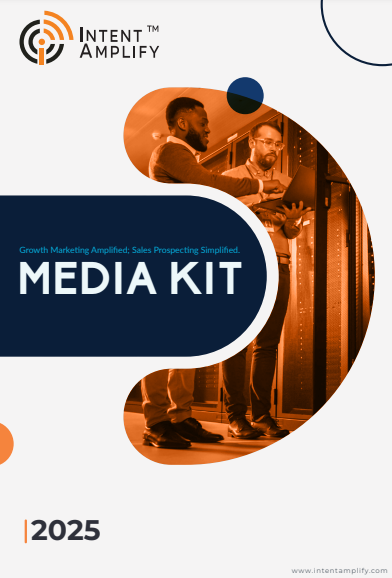
Voice and Visual Search – The Next Frontier in B2B Marketing Automation
- Last updated on: October 16, 2025
B2B buyers are a far cry from the traditional employees who used to dig up all the data themselves. They are looking for answers to their queries, literally by speaking to a device, snapping a photo, and within moments, they expect to receive accurate information. This metamorphosis of their search behavior is affecting many marketers, stirring up the dust on how to reach the consumers. As a matter of fact, Voice and Visual search are no longer the playgrounds of B2C but rather the warehouses in which B2B marketing automation does its quiet revolution.
The impact of these technologies on B2B marketing automation is huge and, in large part. unseen. They help companies to attract buyers beyond the reach of traditional search through various functions like content distribution and lead scoring. It is getting more and more crucial for a B2B company to understand the functioning of the two types of search and the intertwining of them in automated operations in order to survive and thrive in the market.
What Are Voice and Visual Search?
Voice search is a technology where users can tell their concerns or requests to the device, and the device does the typing by itself. Examples of this are smart assistants, vehicle navigation, and smartphones. Visual search is a technology where users can find what they want with the help of a picture rather than words. For instance, by posting a photo of the desired product or by scanning a QR code. Both methods employ AI and machine learning technologies, which not only scan but also understand and give the most relevant results.
In B2B, they can be used to make the searching of software demos, product details, or case studies more efficient than through the use of keywords. For marketers, it is a neat trick to get to the same level as the content consumers have in mind for their natural way of querying or looking up solutions.
Why Voice and Visual Search Matter in B2B Marketing Automation
B2B marketers have begun to acknowledge that voice and visual searches are not just temporary trends. They significantly impact how buyers locate and evaluate solutions. Here is why they are important:
Changing Search Behavior
B2B decision makers are looking for conversational and natural searches when they interact with a search engine. A lot of them use spoken queries or image-based searches instead of typing text. Not optimizing for these behaviors may result in losing crucial opportunities to engage the buyer journey at its early stage.
Faster Alignment with Buyer Intent
Voice and visual searches make it very clear what a prospect needs. Automation platforms can record such data to provide personalized content, demos, or follow-ups, thus the right person gets the right message at the right time.
Enhanced Lead Scoring Accuracy
Search signals give more insight into the intent of prospects. If these signals are used together with automation, they will result in better lead scoring, and the marketing teams will be able to concentrate on high-value prospects who have a higher chance of conversion.
Improved Content Discoverability
Making content suitable for natural language and images will increase its reach through various channels. Prospects will be able to find your solutions quickly, which will lower the resistance and shorten the way from discovery to engagement.
Supports Data-Driven Decisions
By analyzing the voice and visual search queries, marketers can identify the trends, preferences, and issues that consumers have. This, in turn, helps to shape content strategy, campaign planning, and overall marketing automation effectiveness.
How Voice and Visual Search Enhance Marketing Automation Workflows
Voice and visual search have the potential to change the B2B marketing automation in dramatic ways. The main reason is:
Smarter Lead Scoring
Signals from voice and visual searches depict the consumer with a true mindset and intentions behind the purchase. If a user said “enterprise AI tools,” it would be interpreted as a prospect with very high interest. Based on this interaction, automation platforms may increase the lead scores, thus sales can target more qualified leads.
Faster Personalized Engagement
Automation workflows can instantly deliver the most relevant content. For example, when a user is searching by voice for “top SaaS solutions for SMEs,” a personalized email or chatbot reply with a relevant case study can be delivered, which will make the buyer journey much shorter.
Contextual Content Delivery
Depending on the content the user is searching for, it can be delivered in different ways as per the mode of the search. In the case of a visual search, when one is looking at the product image, the automated system will provide suggestions for similar products or demos, thereby increasing the relevance of engagement.
Enhanced Data Collection for Insights
Marketers who integrate voice and visual search with their automation tools can gather very detailed behavioral data. This data helps to understand what buyers want, which questions are asked the most, and where there are gaps in content, thus directing the strategy.
Improved Multi-Channel Consistency
The insights that are derived from search can be utilized through several channels, like email, CRM, chatbots, and retargeting campaigns. The consumers will receive messages and offers that are consistent, irrespective of the channel.
Higher Conversion Potential
Automation, by delivering in real time the targeted content in response to voice or visual queries, reduces the lead conversion flow friction and increases the chance that leads become customers.
Competitive Differentiation
B2B brands that use automation to leverage these search signals will have a step ahead of those competitors who only use traditional keyword-based methods and thereby can position themselves as more accessible and innovative.
Key Differences Between Voice and Visual Search for B2B Use Cases
| Feature | Voice Search | Visual Search |
| Input Type | Vocal Language | Image or object distinction |
| Best for | Loquacious queries, Q&A, intent-based searches | Product demos, brand identification, data visuals |
| Integration | Smart assistants, chatbots | AI-powered CRM, visual content recognition |
| Automation Benefit | Triggers automated responses or workflows | Refines product-matching and ad targeting |
These differences highlight how B2B marketers can use each method strategically. Voice search works best for intent-driven engagement, while visual search supports product discovery and context-rich interactions.
Using Voice and Visual Search in Your B2B Strategy
Optimizing for Natural Queries
B2B buyers communicate differently than they type. They might write something like “best marketing automation for SMBs,” but will ask “what marketing automation tool is best for small teams?” when asked with voice. Marketers must produce content that reflects these patterns of conversation. Begin by refreshing FAQs, blog post titles, and headings to mirror the manner in which actual humans frame questions. For visual search, make sure every image, chart, and product image has descriptive alt text and contextual captions. This assists search engines and AI in correctly understanding the material so that it becomes more discoverable. Case studies, explainer videos, and product diagrams also benefit from labeled images, making prospects able to visually locate solutions.
Search with Marketing Automation Platforms
Automation tools such as HubSpot, Marketo, and Salesforce can take the search signals and turn them into actionable workflows. For instance, if a prospect queries a voice assistant on “AI-driven lead scoring,” your system can send an automated email with an appropriate case study or demo. Visual searches, such as a potential buyer uploading an image of the product, can feed CRM systems to suggest custom recommendations or follow-ups. This minimizes friction, accelerates the buyer journey, and makes each touchpoint feel tailored. The trick is to map search behavior onto workflows and refine them iteratively using actual engagement metrics.
Measuring Success and Optimizing Continuously
Implementing voice and visual search is not enough; you must monitor its effect. Query-to-lead conversion, engagement with automated content, and repeat searches offer clues about what works. Conducting A/B tests on various conversational phrases and image metadata can unveil what most speaks to your audience. Audits on a regular basis ensure that your content stays in sync with changing search behaviors, and automation workflows keep delivering the right prospects at the optimal moment.
Data Accuracy and Privacy Issues
Voice and visual search require sensitive inputs, so privacy is of utmost importance. Be transparent about collecting and using user data and respect regulations such as GDPR or CCPA. Accuracy can also be a problem. AI may misinterpret queries or images. Ensuring the marketer validates outputs, tests responses, and gives easy ways to correct mistakes ensures that the buyer experience remains seamless and trustworthy by combining the advantages of automation with human oversight.
The Future of Visual and Voice Search in B2B Marketing Automation
Voice and visual search will keep evolving with multimodal interfaces and AI. Automation platforms will learn to better predict intent and provide content proactively. B2B marketers who move early can remain ahead of the curve by designing conversational content, merging search-driven insights, and optimizing lead scoring. At the end of the day, the human factor is understanding intent and establishing relationships. It’s still at the core, even as technology influences the way buyers find and interact with brands.
Conclusion:
Voice and visual search are quietly revolutionizing how B2B buyers engage with content. By optimizing for image and natural language queries, marketers can make automated processes smarter and more tailored. Plugging these tools into CRM and marketing automation platforms enhances lead scoring, content distribution, and buyer engagement. As the technology itself develops, the underlying principle is uncomplicated: knowing what your audience is looking for and presenting it to them in the most natural manner possible.
Early adoption coupled with strategic thinking will provide B2B brands with a distinct competitive advantage.
FAQs
How are voice and visual search impacting B2B lead generation?
It enables marketers to capture buyer intent sooner and deliver personalized content automatically.
Are voice and visual search automations available for adoption in small B2B companies?
Yes, smaller teams can utilize AI tools and CRM integration for lead discovery.
Which platforms enable these types of searches currently?
Voice-based assistants such as Alexa and Google Assistant, and platforms such as HubSpot and Salesforce, enable integrations.
Is voice and visual search optimization identical to standard SEO?
Not precisely. You need to be targeting natural queries, conversational phrases, and descriptive image metadata.
How do I best begin to incorporate these into marketing automation?
Start with auditing your content and CRM workflows and then mapping queries to automated follow-ups.



